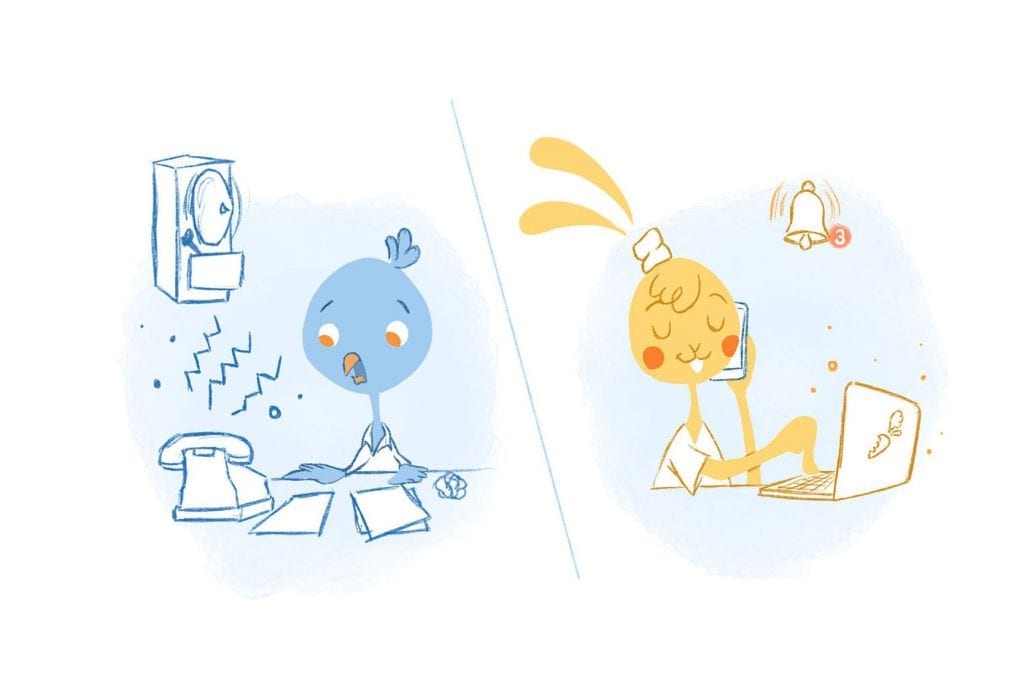

Every year during the Daylight savings transition, clocks are rolled back and Americans confused. Here’s how it can be a smoother transition.
This annual tradition has baffled many Americans who question the system and its purpose. Regardless, everyone needs to make adjustments to keep up with the time change.
To understand daylight saving time, you need to brush up on a little bit of history. Here’s why the time change was first introduced and why it’s still in place today:
A Brief History of daylight saving
The first suggestion for daylight saving came from Benjamin Franklin. He penned an anonymous essay to The Journal of Paris, explaining that people could save money on candles by getting up earlier to rely on natural sunlight. While satirical in its writing, the idea stuck around.
Daylight saving time was first implemented during World War I when Germany used it to conserve fuel in 1916. The rest of Europe quickly copied Germany’s schedule. The United States followed suit in 1918 but was met with backlash from farmers who claimed the time change gave them less time to perform chores in the morning.
Due to this pushback, daylight saving time was repealed in the U.S. following the war. However, some local places continued to follow the practice, including New York City. Due to the city’s standing as a financial capital of the world, numerous other locations followed its lead to keep in sync.
During World War II, daylight saving time was brought back as a universal time management system. However, after the war, there was still no nationwide regulation for daylight saving, making it a very sporadic rule across states and cities. Some chose to continue relying on it; others did not.
The first federal mandate to follow daylight savings time was passed in 1967. Transportation had become difficult to coordinate with different states following different times, which compelled the government to take action. The government allowed states the alternative of neither rolling clocks forward nor back, which is how Arizona and Hawaii operate. Worldwide, daylight saving time has expanded to about 70 countries.
[Related: Adjusting Your Schedule to the Changing Daylight Hours]
Get Back On Track With an Online Calendar
Now that you know a little more about daylight saving, the challenge is staying on top of it. Even though it’s just a one-hour time difference, it can really throw off your schedule if you’re not careful. Here are some tips for handling DST with ease:
Set a Reminder
Daylight saving time can be easy to forget, making the daylight savings transition harder. You don’t want to be caught off guard, so set a reminder in your Calendar to help you remember. The night before the time change is best — but if you are already on Sunday — let’s celebrate!! At least you won’t be late for work tomorrow, and the kids won’t miss the bus. Change the clock now and get everything situated.
Most devices connected to the internet will change their time automatically, which is a nifty feature. However, you might have other clocks that will need manual adjustments. For example, clocks in your vehicles, kitchen appliances, and wall clocks will likely need to be manually rolled back.
Master Your Morning Routine
One of the most significant changes with daylight saving is how you approach your mornings. Setting your clock back will make the mornings much darker. Instead, I set a timer to flip a bunch of lights on so it won’t be more challenging to get going in the morning.
Unless you’re already used to this, you can benefit from a good morning routine. Following a routine will help you function first thing in the morning, starting off each day on the right foot. Try a morning jog or some sunrise yoga to get your bearings.
Adjust Your Schedule
The nature of your job or lifestyle might need some alterations at different points of daylight saving. For example, those who work outdoors might need sunlight to perform their labors.
Your Calendar is a perfect tool for calibrating your schedule. It will help you visualize your day and figure out which changes are necessary and which are not.
Get Enough Sleep
While you don’t need to change your clocks until the day of the change, some start preparing for daylight saving by going to bed earlier. Going to bed earlier helps your mind and body make the daylight savings transition more smoothly. Early to bed is particularly important for light sleepers: Getting enough sleep is crucial for your health and productivity.
Perfect Your Evening Routine
Getting up earlier isn’t the only important adjustment to make for daylight saving time. How you approach each evening can set the tone for a successful daylight savings transition. Use screens or drink caffeine too late into the evening, and you might be in for a difficult morning.
Use an online Calendar like Cron, Thryve, or Calendar to develop a nightly routine that helps you get the sleep you need, as mentioned previously. Stay away from coffee and tea, and consider eating a little earlier to give your body time to digest. Remember to put down your phone and turn off the television at least an hour before you go to bed.
Until daylight saving is no longer the law of the land, you’ll need to adjust to it twice a year. So use your online Calendar to your advantage. It will help you hit your stride no matter what the clock says.
Image Credit:











Abby Miller
Student at UC Berkeley, currently working on a degree in Electrical Engineering/Computer Sciences and Business Administration. Experienced in CSX, productivity management, and chatbot implementation.